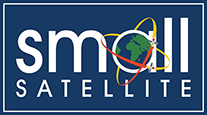Session
Session VIII: Advanced Technologies 2 - Research & Academia
Location
Salt Palace Convention Center, Salt Lake City, UT
Abstract
SPECIES (Smart Polyimide Expandable Collector to enable Investigations for Earth Science) is a NASA Earth Science Technology Office (ESTO) project that explores the use of a deployable diffractive optical element (DOE) in a space-based lidar instrument for a 12–24U CubeSat operating in low Earth orbit (LEO). The DOE, a 0.6-meter hybrid multi-level Fresnel zone plate, is made using a tessellation of hexagonal molds, each with a unique number of diffractive levels. It is stowed for launch and deployed on orbit using a 3 meter long extendible boom, which positions the optic at the correct distance from the spacecraft, while guy wires provide tensioning to maintain a flat profile. This approach leverages the weight and cost advantages of DOEs over traditional optics of comparable size, making them a promising option for small satellite platforms.
The project examines key challenges in deploying and operating such an optic, including the identification of supporting optical and spacecraft systems and modeling the effects of mechanically and thermally induced deformations, up to millimeters in size, on lidar performance. A custom optical model is used to propagate the beam through the deformed DOE and evaluate key performance metrics, including point spread function spot size and lidar signal to noise ratio. Simulations show that despite the presence of moderate deformations, the proposed DOE architecture maintains a compact enough PSF (80% energy in a 1 mm radius), and a cloud-targeting lidar SNR within a factor of three of CALIOP—a heritage lidar mission using traditional reflective optics—while offering significant advantages in mass and receiver aperture size. By quantifying these effects, this work aims to establish the feasibility of using large-format, lightweight DOEs in space-based lidar systems.
Document Type
Event
Deployable Diffractive Optical Elements for Small Satellite LiDAR Missions
Salt Palace Convention Center, Salt Lake City, UT
SPECIES (Smart Polyimide Expandable Collector to enable Investigations for Earth Science) is a NASA Earth Science Technology Office (ESTO) project that explores the use of a deployable diffractive optical element (DOE) in a space-based lidar instrument for a 12–24U CubeSat operating in low Earth orbit (LEO). The DOE, a 0.6-meter hybrid multi-level Fresnel zone plate, is made using a tessellation of hexagonal molds, each with a unique number of diffractive levels. It is stowed for launch and deployed on orbit using a 3 meter long extendible boom, which positions the optic at the correct distance from the spacecraft, while guy wires provide tensioning to maintain a flat profile. This approach leverages the weight and cost advantages of DOEs over traditional optics of comparable size, making them a promising option for small satellite platforms.
The project examines key challenges in deploying and operating such an optic, including the identification of supporting optical and spacecraft systems and modeling the effects of mechanically and thermally induced deformations, up to millimeters in size, on lidar performance. A custom optical model is used to propagate the beam through the deformed DOE and evaluate key performance metrics, including point spread function spot size and lidar signal to noise ratio. Simulations show that despite the presence of moderate deformations, the proposed DOE architecture maintains a compact enough PSF (80% energy in a 1 mm radius), and a cloud-targeting lidar SNR within a factor of three of CALIOP—a heritage lidar mission using traditional reflective optics—while offering significant advantages in mass and receiver aperture size. By quantifying these effects, this work aims to establish the feasibility of using large-format, lightweight DOEs in space-based lidar systems.


